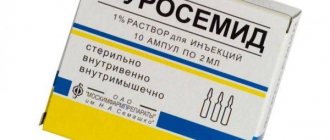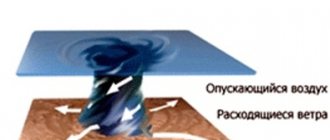Idling, despite the apparent simplicity of its implementation in gasoline engines, is a very inconvenient mode. In this mode, just enough useful energy is released to ensure the rotation of the crankshaft at a minimum stable speed, the drive of the gas distribution mechanism with the implementation of gas exchange processes and the drive of auxiliary units. Indicated efficiency at idle mode is minimal. The working process in an idling engine occurs under a very unfavorable combination of conditions:
- low speed of the fuel-air mixture during the intake and compression strokes does not contribute to good mixture formation;
- a long working cycle time promotes intensive heat exchange of the working fluid with engine parts;
- low pressure in the intake manifold causes a low concentration of reactants (hydrocarbons and oxygen), and, as a result, the combustion process is slow and unstable;
- the pressure difference between the intake and exhaust manifolds, combined with the long duration of all processes, leads to the backflow of exhaust gases into the combustion chamber, and then into the intake manifold, at the moment the valve timing overlaps (valve overlap), which further reduces the concentration of reactants in combustion chamber.
Points 1 and 2 are affected exclusively by the design features of the engine. Let's now talk about points 3 and 4 and their mutual influence. To begin with, let us remember that a piston gasoline internal combustion engine is an engine with quantitative control of the working process, that is, the torque removed from the engine crankshaft depends on the amount of fresh mixture entering the cylinder. Restricting the supply of air (fuel-air mixture) is called throttling. The engine is being choked and not allowed to breathe. The throttle position determines how much air will enter the intake manifold for a given pressure difference between atmospheric pressure and intake manifold pressure.
Engine efficiency assessment
How to evaluate engine efficiency? The obvious criterion will be the fuel consumption related to the work performed. When the engine is idling, the effective work is zero, therefore, fuel consumption (all other things being equal) clearly characterizes the efficiency of the engine at idle. But fuel consumption and air consumption are interrelated quantities. At idle, the throttle valve is fully closed, air enters the intake manifold through the RAVR (secondary air regulator), and it gives the engine as much air as it needs to idle.
Why do MAP sensors fail?
Like most electrical sensors, MAPs are sensitive to contamination. If a hose is used to connect the MAP, it may become clogged or leaky, which will lead to an error in sensor measurement or, in general, to the impossibility of this. In some cases, extreme vibrations from driving can loosen connections and cause external damage. Electrical connectors can also melt or crack from overheating due to their close proximity to the engine. In any of these cases the MAP must be replaced.
Intake manifold pressure
Let's consider such an interesting parameter of engine operation as pressure in the intake manifold. When considering this parameter, we can recall the problem of a swimming pool, into which water flows into one pipe (throttle valve), and flows out through the other (inlet valves), and the water level (pressure in the intake manifold) is the resultant work of these two pipes. Only in the case of a car engine, everything is more complicated: the air flow through the RDV depends on its position and the pressure difference between the intake manifold and the atmosphere, and the air flow through the intake valves depends on the pressure in the intake manifold and on the valve timing. The pressure in the intake manifold directly determines how much fresh working mixture will enter the cylinder. And if two identical engines are idling with the same additional load caused by the drive of the units, then the indicated efficiency is higher for the engine that has lower pressure in the intake manifold (the lower the pressure (the greater the vacuum), the less fresh mixture enters the cylinders , and if the work done by these engines is the same, then the efficiency is higher for the one that consumes less fuel). For convenience of consideration, we assume that both engines under consideration operate using lambda regulation and with the same SOP. The pressure in the intake manifold has a significant impact on the process of backflow of gases: the lower the pressure in the intake manifold, the greater the pressure difference between the intake and exhaust manifolds will be, that is, the difference under which backflow occurs. If we begin to increase the valve overlap angle (time-section when both valves are open), then we sharply increase the reverse throw. Exhaust gases from the exhaust manifold flow through the open valves and combustion chamber into the intake manifold. During intake, the exhaust gases thrown from the exhaust manifold first enter the cylinder, and then only the fresh mixture. At a constant pressure in the intake manifold, this will lead to the replacement of part of the fresh charge with exhaust gases (a decrease in the cyclic filling of the fresh mixture) and a decrease in the concentration of reacting substances. Both of these points lead to a decrease in the efficiency of the work cycle. The compensation measure to maintain engine speed is to increase air (and fuel) flow at a given speed. The increase in air flow is carried out by increasing the flow area of the RDV. This leads to an increase in pressure in the intake manifold (a decrease in the pressure difference between the intake and exhaust manifolds) and, as a consequence, a reduction in the backflow of exhaust gases. Accordingly, each relative position of the valve timing corresponds to its own air and fuel consumption and its own pressure in the intake manifold, ensuring engine operation at a given idle speed. So, we come to the conclusion that when carrying out repair and adjustment work, it is really only possible to influence the relative position and width of the valve timing overlap. Each timing belt layout has its own characteristics. On engines with hydraulic lash compensators in the valve drive and individual shafts for the intake and exhaust valves, the valve timing has a very wide range of possible settings. On single-shaft (with one camshaft) engines with an adjustable thermal gap in the valve drive, the width of the valve timing overlap depends on the profile of the cams and the size of the thermal gaps (the larger the gap, the smaller the phase overlap). On single-shaft engines with hydraulic lash compensators in the valve drive, only the cam profile affects the width and relative position of the valve timing.
Common MAP Trouble Codes
Below is a list of MAP sensor related codes to look for if your check engine light comes on:
- P0068: MAP/MAF - throttle position correlation;
- P0069: Manifold Absolute Pressure - Correlation with Barometric Pressure;
- P0105: MAP circuit failure;
- P0106: MAP Circuit/Barometric Pressure Range Problem/Performance Problem;
- P0107: Manifold absolute pressure/barometric pressure circuit low input;
- P0108: MAP Pressure Circuit High Input;
- P0109: MAP/barometric pressure circuit interrupted;
- P1106: MAP Circuit/Barometric Pressure Range/Performance Problem;
- P1107: Barometric Pressure Sensor Circuit Low Voltage.
Note: Sometimes other sensors or other faulty parts can cause these codes to appear. Even if your engine is experiencing the symptoms listed above and is setting one or more of the OBD-II codes listed, it is recommended that you check the MAP to ensure it is faulty.
Valve timing
During repair work, only a joint shift of the valve timing relative to the position of the piston in the cylinder is possible (rotation of the camshaft relative to the crankshaft). It should be noted that the width of the valve timing and their relative position on general-purpose automobile engines is chosen as a compromise between the modes of maximum power, maximum torque, minimum speed under load and idle. To ensure comfortable operation of the car, the car engine must have good bottom-end, a smooth torque curve over a wide speed range and smooth idling. The gas distribution mechanism is entrusted with the task of ensuring maximum cleaning of the cylinder from exhaust gases and maximum filling it with fresh charge throughout the entire range of engine operation. From an idle point of view, maximum power mode is diametrically opposed. And, if narrow valve timing phases (late opening - early closing) without phase overlap are optimal for idling, then wide phases are required for maximum power; the higher the maximum rotation speed, the wider the phases. This is explained by two circumstances: a reduction in the time for gas exchange processes and an increase in speeds, and therefore accelerations, and consequently, efforts in the valve drive with increasing rotation speed. The second circumstance imposes strict restrictions on the trajectory of the valve, especially in the opening and closing sections. This means that in the area where the valve is lifted from the seat and seated, the change in valve position beyond a certain angle of rotation of the camshaft is very small. At high rotation speeds, these sections (the beginning and end of the valve movement) do not play a significant role in gas exchange processes, but at idle it is these sections that create the problems of unevenness at idle described above. In practice, problems with engine idling smoothness can arise as a result of lengthening (stretching) the drive chain or replacing camshafts. Oddly enough, the cam profile of the old shaft may differ significantly from the profile of the new one. If we say that the uniformity of engine operation at idle does not suit us, then to improve it by adjusting the phases we need to sacrifice something. In engines with two camshafts, reducing the valve timing overlap by changing the position of the camshafts relative to the crankshaft sacrifices power modes (reducing the valve timing overlap angle by 6 degrees of crankshaft rotation on the M60 engine increases the free acceleration time to 6000 rpm by 4 - 6%) . On single-shaft engines, increasing the thermal clearance in the valve drive, in order to reduce the valve timing overlap angle, increases the acceleration, and therefore the effort, in the valve drive. This increases the noise of the engine and the risk of accelerated wear of the cam-rocker and eccentric-valve pairs. Now, having examined the influence of valve timing on engine operation, we will try to understand why a slight change in the valve timing overlap angle (6 - 10 degrees of PCV - crankshaft rotation) leads to such a noticeable increase in the level of rotation speed unevenness (with expansion of the phases) and, conversely, with a decrease phase overlap angle, unevenness decreases sharply? The fact is that in the areas of the beginning of the opening and the end of the closing of the valve, the flow area between the seat and the valve changes nonlinearly. At the initial part of the valve opening trajectory, the increase in its flow area as the camshaft rotates is insignificant. Then, the flow area of the valve begins to increase more and more intensively. Accordingly, the integral indicator of valve timing overlap, time - flow area, will change sharply with a slight change in the angle of mutual overlap of valve timing.
Repair
What should be done in case of minor malfunctions of the absolute pressure sensor? It should be said that minor repair work is within the capabilities of the average car owner. If the sensor has serious faults, then there are no other options other than completely replacing it. But replacing the device is within the capabilities of the car owner himself. To do this, you need to know where the sensor is located. It is necessary to disconnect the hose between the manifold and the sensor, disconnect the set of wires and remove the fasteners in the form of bolts. Next, you need to replace the sensor with a new one, performing all the operations in reverse.
If minor defects are present, the following operations are permissible:
- First of all, as described above, the sensor is removed. After removing the outer casing, you need to look for visible signs of malfunction.
- If dirt, rust, etc. are present, they should be cleaned. Next you need to check the electrical contacts. After all manipulations, you need to dry the device.
- After all cleaning procedures, it is recommended to use silicone sealant in the fastening areas and longer drying in warm conditions.
- Only after 24 hours is it possible to assemble the sensor parts. During assembly, special attention should be paid to the tightness of the fastening.
After all the manipulations, you should immediately check the functionality of the sensor. Start the car, if the start went without any incidents, then we can assume that the minor repairs were successful. Otherwise, you can be sure that there is a serious malfunction of the sensor, and the problem should be resolved by contacting specialists.
If you have any questions, leave them in the comments below the article. We or our visitors will be happy to answer them
Causes of engine vibration
Let's consider the reasons for the occurrence of engine oscillations on the supports when idling. It is known that when fired, the cannon rolls back in the direction opposite to the direction of the shot: the law of conservation of momentum works. In the case of an engine, the role of a projectile is given to the crankshaft with a flywheel, and the role of a gun is given to the cylinder block with attachments. When the crankshaft receives angular acceleration clockwise, the block, according to the law of conservation of angular momentum, receives angular acceleration counterclockwise. Accordingly, the higher the instability of the crankshaft rotation speed (change in rotation speed over a short period of time), the greater will be the amplitude of engine oscillation on the supports. When idling, the average crankshaft speed is maintained by the engine control unit at a given value. A piston engine is a discrete type machine, and the operating efficiency of a series of power strokes cannot be absolutely the same. This especially applies to idling, the unfavorability of which was noted above. And, even if the average efficiency values calculated for all engine cylinders for any period of engine operation (5 - 10 seconds) are close to zero, when considering a series of consecutive power strokes, an alternation of strokes with positive and negative efficiency is observed. Efficiency refers to the change in crankshaft speed in the interval between TDC of two cylinders operating in series. If the rotation speed has increased, the efficiency is positive; if it has decreased, the efficiency is negative. When an engine operates with an increased valve timing overlap angle, working strokes with positive and negative efficiency can follow in a variety of combinations, and the greater the valve timing overlap angle, the greater the values of both positive and negative efficiency will be for the strokes that make up the working process. But, if you consistently track the operating efficiency of each cylinder over a selected period of engine operation, you will discover an interesting fact: in each cylinder, power strokes with positive and negative efficiency follow with strict alternation. That is, if in one cycle, for example, the fifth cylinder has a positive efficiency, then in the next it is negative, then again positive, and so on. Moreover, each cycle consists of a combination of power strokes with positive and negative efficiency, the engine swings strongly on its supports, and the arithmetic average efficiency of the power strokes does not differ significantly from zero. Let's try to figure out what causes this engine operation? As already mentioned, with an increase in the phase overlap angle, a significantly larger amount of combustion products from the previous power stroke, previously thrown into the exhaust tract, enters the cylinder. These products reduce the concentration of reacting substances, and the combustion process in the next working stroke is poor and incomplete. Accordingly, the combustion products of this power stroke contain a lot of oxygen and hydrocarbons, and when the fresh mixture of the subsequent power stroke is diluted with these products, the final concentration of reactants in it turns out to be higher than that of an engine with a normal phase overlap angle (this is facilitated by higher pressure in the intake collector). The result is a power stroke with high efficiency and, accordingly, good combustion efficiency. The products of this efficient working stroke contain little oxygen and hydrocarbons and, diluting the fresh mixture of the next working stroke, lead to its low efficiency. Thus, this process is repeated and occurs in all cylinders of the engine. Below are snippets of the M50B25 Vanos engine idling. In the first fragment, the intake shaft is rotated forward by 5 degrees PCV, and the exhaust shaft is rotated back by 5 degrees PCV. In the second fragment, on the contrary, the intake shaft is turned back, and the exhaust shaft is turned forward by the same 5 degrees PCV. When comparing these fragments, the difference in the uneven rotation of the crankshaft is striking. It can also be noted that when the phases are narrowed, there is a reduction in air and fuel consumption, a decrease in air pressure in the engine intake manifold.
In extended phases
At narrowed phases
To summarize, it can be noted that a deviation of 3–6 degrees of crankshaft rotation from the factory specifications when installing camshafts on twin-shaft engines does not lead to a noticeable change in the dynamic and economic performance of the engine. For engines with an adjustable thermal gap in the valve drive, an increase in the thermal gap by 0.05 - 0.10 mm is also acceptable. This article examines the uneven operation of the engine at idle, caused solely by the characteristics of gas exchange. Problems caused by uneven distribution of crankcase gases, different distribution of fuel among the cylinders, different compression, etc. remained beyond the scope of consideration. © Copyright Dolgov I A; Alexandrov A V









